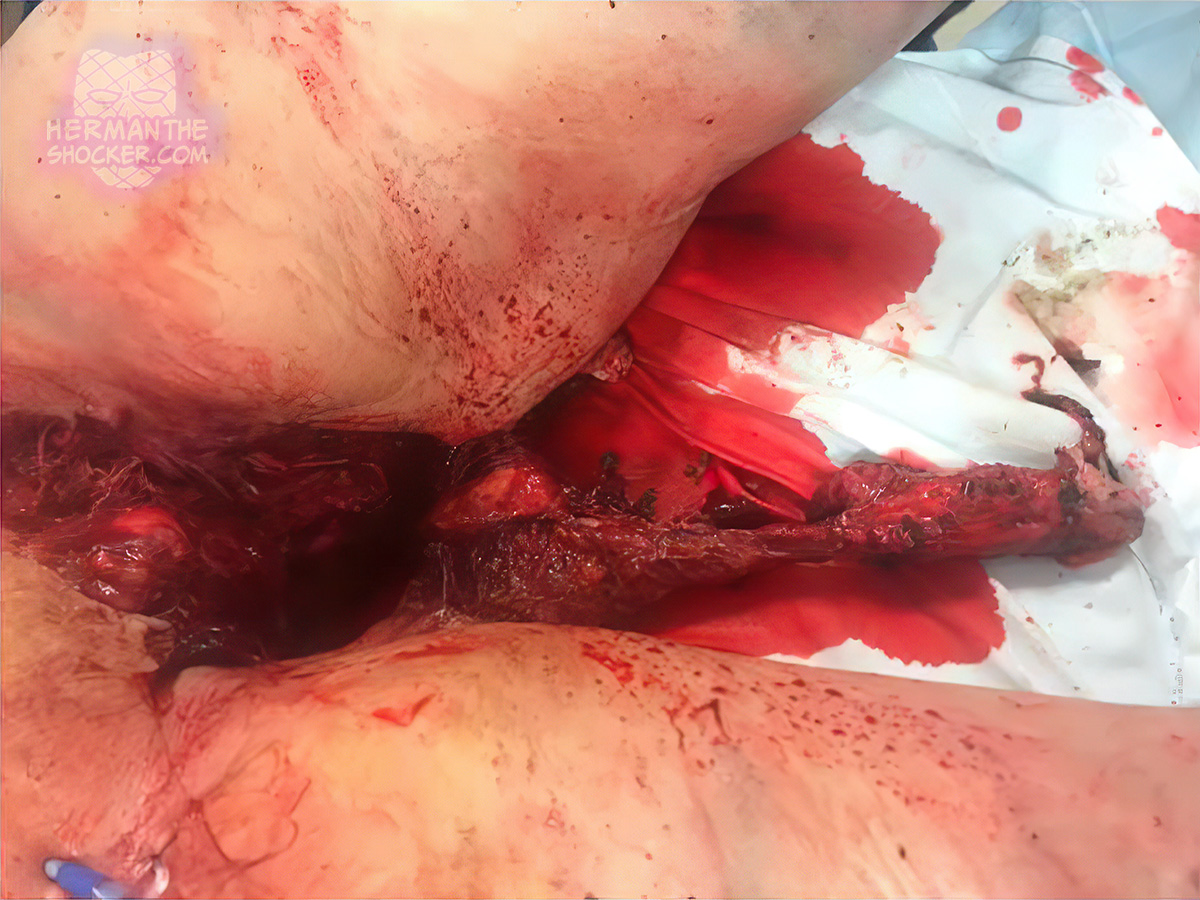West Virginia, USA. A 69-year-old male who was found underneath an industrial-sized lawn mower in a rural area. The lawnmower had tipped as he was ascending a hill, and he was trapped underneath for an indeterminate amount of time. The patient suffered avulsion of his penis, scrotum, and testicles along with sustaining gaping perineal and left lower extremity wounds. He arrived in hemorrhagic shock.
After resuscitation his immediate surgical management included hemostatic control, a descending loop colostomy, open J tube placement, and irrigation and debridement (I and D) of his perineal wound. His prostatic urethra was deemed intact and he had 4 cm of corpora cavernosa remaining bilaterally. A 16 French (Fr) Foley catheter was inserted into the urethra stump to empty the bladder and to prevent urine from further contaminating an already dirty surgical field. Bleeding was identified from the corporal stumps prompting ligation with 3-0 Vicryl horizontal mattress sutures.
On the following day, his perineal and lower extremity wounds were irrigated and debrided. A 16 Fr suprapubic catheter was placed 2 centimeters proximal to the pubic symphysis allowing for urinary diversion from the large perineal wound. The remaining corporal stumps were found to be nonviable, prompting a total penectomy. The 4 cm corpora cavernosa stump was resected at the base of the penis, divided with LigaSure and suture ligated with 2-0 Vicryl. The corpora spongiosum and bulbomembranous urethra were ligated using interrupted vertical mattress with 0 Vicryl.
The patient returned to the operating room every other day for the next few weeks for irrigation and debridement of his perineal wound. He underwent numerous nonurologic operations in the following months including open reduction and internal fixation of his left fibula, cephalomedullary nail insertion into his femur, and grafting of his perineal wound. Since the operations, the patient has returned for exchange of his suprapubic catheter, bladder spasms that are managed with anticholinergics, and urinary tract infections. The patient was most recently seen in the clinic two years following his initial injury. He is able to ambulate but continues to have intermittent bladder spasms controlled with oxybutynin. His suprapubic catheter is exchanged on a monthly basis.
Latest posts










